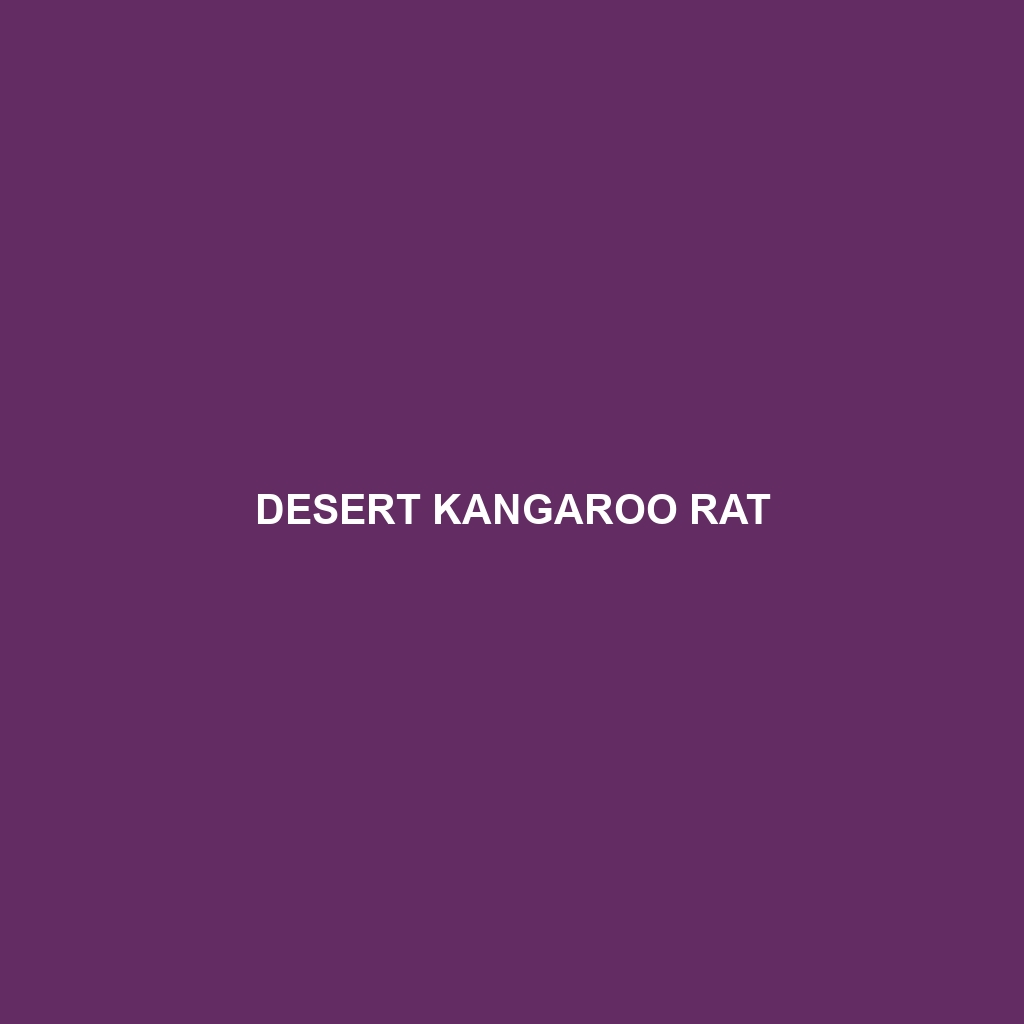Desert Kangaroo Rat
Common Name: Desert Kangaroo Rat
Scientific Name: Dipodomys deserti
Habitat
The Desert Kangaroo Rat is primarily found in the arid regions of the southwestern United States, including areas in California, Nevada, Arizona, and New Mexico. This remarkable species thrives in sandy or loose soil environments, particularly in desert scrub and shrubland ecosystems, where it can easily burrow and evade predators.
Physical Characteristics
Typically, the Desert Kangaroo Rat measures about 8 to 10 inches in length, including a long, tufted tail that contributes to its agility. Its fur is predominantly light brown or tawny, providing excellent camouflage against the sandy desert landscape. Notable features include large hind legs that enable it to leap impressive distances, and cheek pouches that allow it to transport food back to its burrow.
Behavior
Desert Kangaroo Rats are primarily nocturnal creatures, which means they are most active during the night to avoid the extreme daytime temperatures of their habitats. They exhibit remarkable agility and can hop up to 10 feet in a single bound, a behavior that aids in escaping from predators. Additionally, they create extensive burrow systems that function as homes and refuge from harsh environmental conditions.
Diet
The diet of the Desert Kangaroo Rat is primarily granivorous, with a preference for seeds, grains, and occasionally, succulent plant material. Key food sources include seeds from various desert plants like creosote bush and sand verbena. They are also known to extract moisture from the seeds they consume, allowing them to survive in habitats where water is scarce.
Reproduction
Desert Kangaroo Rats typically breed from late winter to early summer. After a gestation period of around 30 days, females give birth to litters of 2 to 6 offspring. The young are born blind and hairless, but they develop quickly, becoming independent within a few weeks. Parental care is critical during the early stages of their life, ensuring the survival of the next generation.
Conservation Status
As of now, the Desert Kangaroo Rat is classified as vulnerable due to habitat loss and degradation, primarily caused by urban development and agricultural practices. Conservation efforts are critical to preserving its natural habitat and ensuring the survival of this unique species in the ecosystem.
Interesting Facts
One fascinating fact about the Desert Kangaroo Rat is its ability to survive without drinking water. It has adapted to extract all necessary moisture from its food, which makes it an essential survivor in the desert environment. Additionally, it can go for long periods without food, relying on stored supplies within its burrows.
Role in Ecosystem
The Desert Kangaroo Rat plays a crucial role in its ecosystem as a seed disperser. By consuming seeds and moving through their habitat, they help promote plant growth and diversity. Furthermore, they serve as prey for various predators, including owls, snakes, and foxes, making them integral to the food chain within their arid environment.
